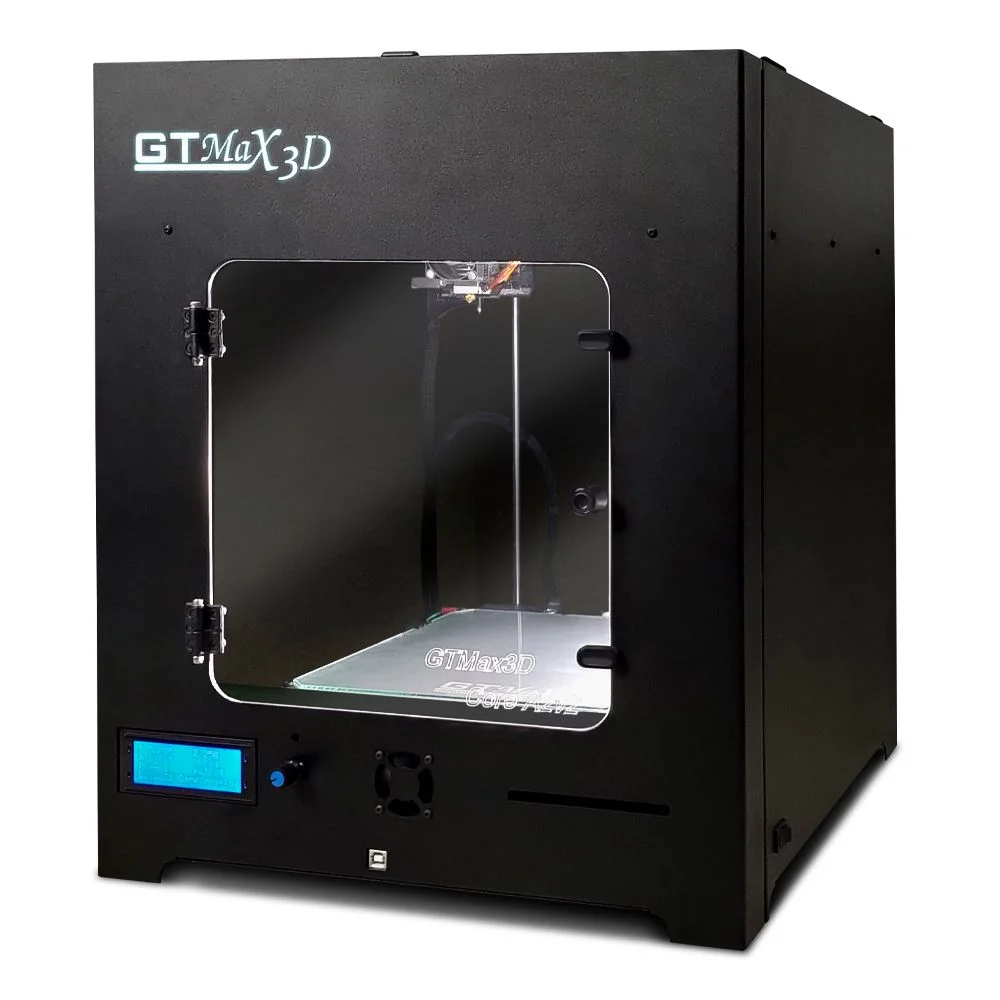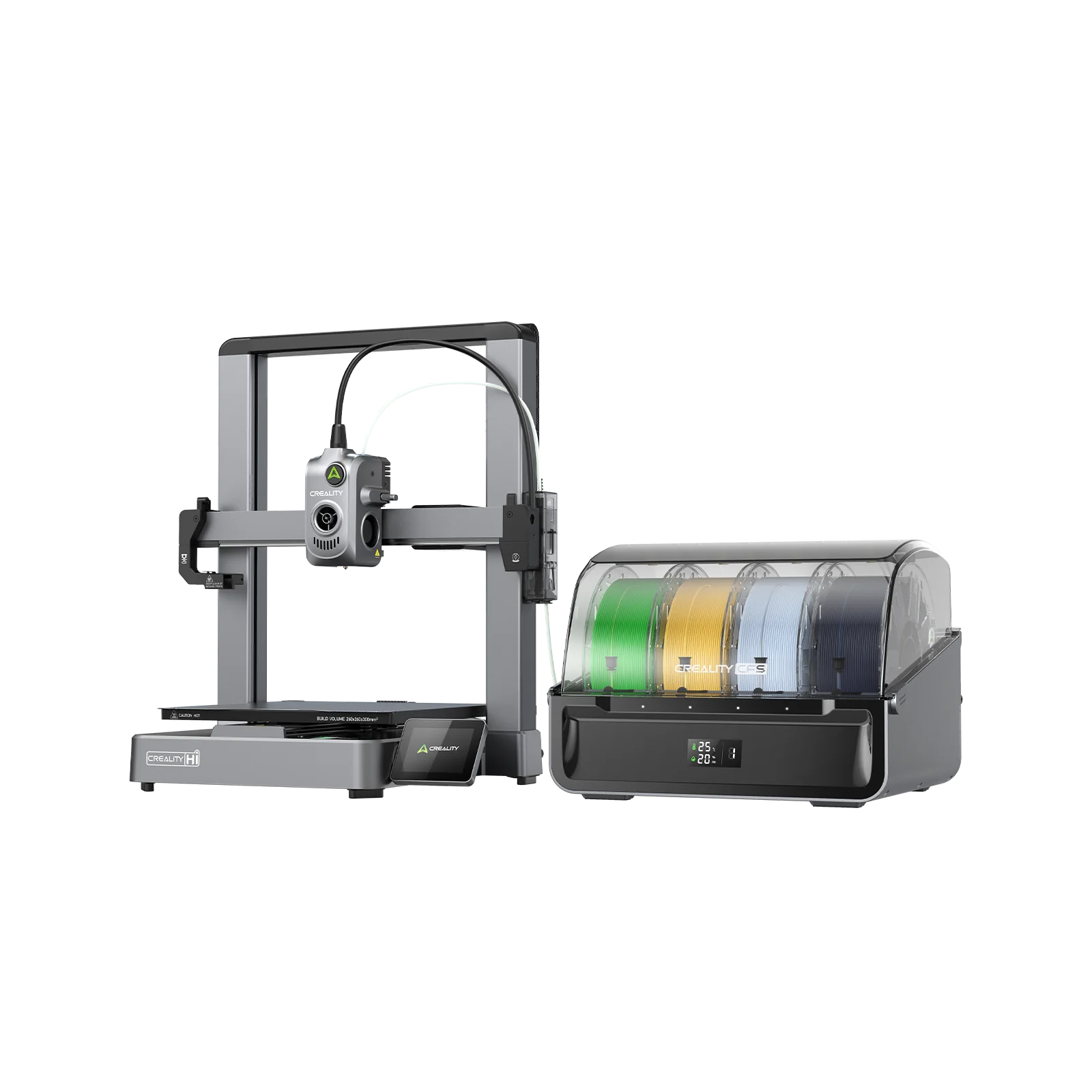Compare Core A2V2 vs Hi Combo
Comparison between the best 3D printers
Choose the best 3D printer at the best price. The cheapest 3D printers are here.
Buy a 3D printer here with 3D Fila.
 |
 |
|
| Model | Core A2V2 |
Hi Combo |
| Printing Material | Filament | Filament |
| Buy Filament for GTMax Core A2V2 | Buy Filament forCreality Hi Combo | |
| Estimated price | $684,00 | $469,00 |
| Manufacturer | GTMax | Creality |
| Release Year | 2019 | 2025 |
| Print Volume [mm] | 220x220x240 | 260x260x300 |
| Printer Size [mm] | 425x460x512 | 409x392x477 |
| Weight [kg] | 19,14 | |
| Power Loss Recovery | YES | YES |
| Enclosed printer | YES | NO |
| Bed Leveling | Automatic | |
| Filament End Sensor | YES | YES |
| Bed type | Heated | Heated |
| Power supply system | Bowden | Direct Drive |
| Standard nozzle | 0,4 | 0,4 |
| Maximum Nozzle Temperature [°C] | 295 | 300 |
| Maximum Bed Temperature [°C] | 135 | 100 |
| Maximum printing speed [mm/s] | 150 | 500 |
| Filament holder | YES | YES |
| Camera for supervision | NO | NO |
| Recommended filaments | PLA, PETG, Tritan, Flex, ABS | Hyper-PLA/PLA/PETG/ABS/PLA-CF |
| Recommended slicers | Cura, Simplify, Slic3r, IdeaMaker | Creality Print 5.1 |
| Maximum Resolution [mm] | 0,05 | 0,1 |
| Processor | ||
| Display | Mono | Touchscreen 3,2'' |
| Power Supply | 390 W | |
| Connectivity | SD / USB | SD Wifi Creality Cloud |
| Operating systems | Windows, Mac, Linux | Windows, Linux e Macbook |
| Date of registration in the system | 2022-11-12 | 2025-01-27 |
| Release date | 2019 | 2025 |
| Extra features | The GTMax3D ProCore A2v2 is a compact and robust 3D printer with a printing area of ??220 x 220 x 240 mm. It offers high print quality, ranging from 0.05 mm to 0.32 mm. Its features include automatic filament detection and changing, travel speed of up to 300 mm/s, and a heated aluminum bed with a glass top. It has automatic bed leveling with 16 points and an all-metal hotend that reaches up to 298°C. The printer has a carbon steel frame with electrostatic painting, is automatic bivolt and has connectivity via USB and SD card. The Bowden system and core xy kinematics complete its advanced features. | The Creality Hi Combo is an advanced 3D printer featuring the CFS system for up to 16 colors and intelligent filament management. It boasts a robust metal frame, speeds up to 500 mm/s, precise auto-leveling, an integrated extruder design, easy-to-swap tri-metal nozzle, and active vibration sensing for smooth prints. Its 95% pre-assembled, with a foldable touchscreen, built-in camera with privacy protection, and Creality OS support for a seamless and powerful experience. |
| Support for multiple colors and materials (AMS and CFS) | NO | YES |
Notes * |
||
| Cost-benefit | 6 / 10 | 8 / 10 |
| Hardware | 2.5 / 10 | 6 / 10 |
| Tela | . | . |
| Print volume | 3 / 10 | 4 / 10 |
| Performance | 1 / 10 | 4 / 10 |
Conclusion |
| In comparing the GTMax Core A2V2 and the Creality Hi Combo 3D printers, it's clear that both offer distinct advantages suited to different user needs. The Core A2V2, while priced higher and released earlier, is an enclosed printer with excellent build quality, automatic bed leveling, and a maximum resolution that allows for fine detail. It excels in temperature management, boasting a higher maximum bed temperature and robust heated features, making it ideal for users focused on precision with materials like ABS and PETG. On the other hand, the Hi Combo presents a more modern, user-friendly design at a lower price point. It boasts a larger print volume and significantly faster maximum printing speeds, making it more suitable for high-volume projects or users looking to experiment with rapid prototyping. With its advanced features like the CFS system for multi-color printing and intelligent filament management, the Hi Combo caters to more advanced users seeking flexibility and enhanced capabilities. While the Core A2V2 offers a sturdy construction and reliable performance for high-quality prints, the Hi Combo stands out for its modern features and versatility, providing an excellent value for users who prioritize speed and variety in their printing projects. Ultimately, the choice between these two printers will depend on the user’s specific printing needs, preferences for speed or precision, and budget considerations. |

